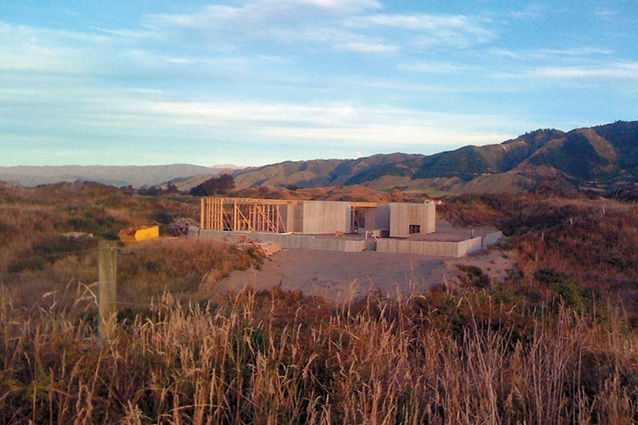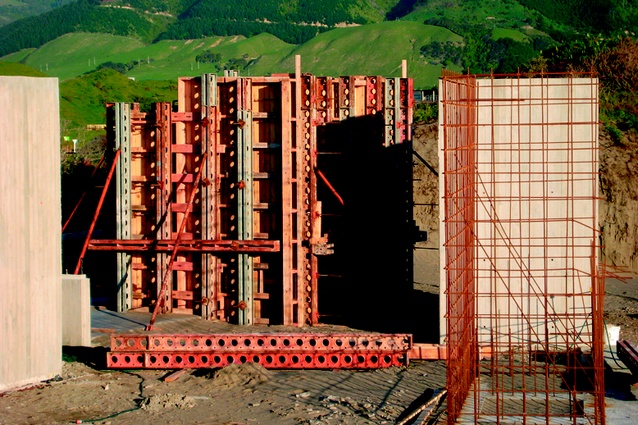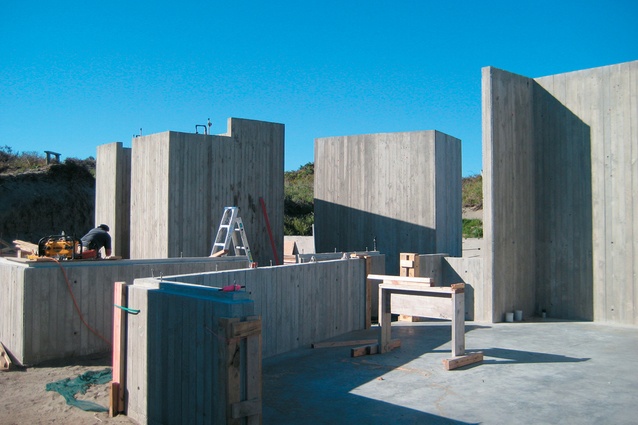Building a house on sand
It’s a scorcher of a day at Peka Peka on the Kapiti Coast. The view from the beach is stunning - sand and dunes stretch on both sides as far as you can see and the sea ripples around a few bathers cooling off in the water. Kapiti Island breaks the wide sweep of sea and sky, and behind me, somewhere among the dunes, architect Andrew Sexton’s new house is being built.
A house on sand? Perhaps sand is the new rock despite the biblical injunction not to build on the stuff - that is if you take it literally. Anyway, building codes and practices have evolved over the past 2,000 years. Sexton and the building contractor, Anthony Stokes of Coastal Construction, meet me inside the frame of the house. Timber trusses prepare for the roof above
a granny flat, garage and man-cave cum study. Up a level and there is an open courtyard, protected from the west wind by the house, which wraps around it. In the granny flat and beyond stand grey concrete walls imprinted with the pattern of timber planks. The walls will enclose four bedrooms and bathroom pods on the north side. The pods will look out onto an open-to-sky internal garden space, secluded with no need for frosted glass. The living area faces east out to the beach, which is just 200 metres away; there’s a laundry, guest room and terrace with outdoor shower. The house itself is 6.2 metres above sea level.
Consulting civil engineer, Hamish Wells, tested the site, which measures around 5,647 square metres. To create a stable, compliant building platform a contractor was brought in to excavate a portion of the site, then he put back and re-compacted the sand. Sand grains are irregularly shaped and quite sharp so when the wind flings them down they sit there, loose, with voids in between them. When compacted by kneading them with heavy machinery the grains rotate into the most compact shape until they can’t be compacted any further. The sand on the coast is well graded, not all one size, and is relatively easy to compact.
Sexton wanted the house to fit in with the landscape, even beyond the requirements of covenants. The house is lower than the allowed 4.5 metres and is tucked discreetly into the retained dunes behind. Houses have to be painted natural colours, so the bare, grey concrete walls (painted with invisible sealant) and floor are a good match with sand and will provide thermal mass. The framing is mostly 140 mm timber - something Sexton has always wanted to do when building and it allows insulation well above code.
Beyond the building platform the dunes have to be planted with vegetation natural to the area and the treated effluent will provide fertiliser and water. Two water tanks holding 45,000 litres will be installed out of the way underground. Concrete pods within the house provide a lateral bracing system for the building and give flexibility to the layout. Along the bedroom wing the pods contain three bathrooms, a spa area and the master en suite; there is a studio bathroom on the opposite wing and another concrete wall structure at the back of the garage.












